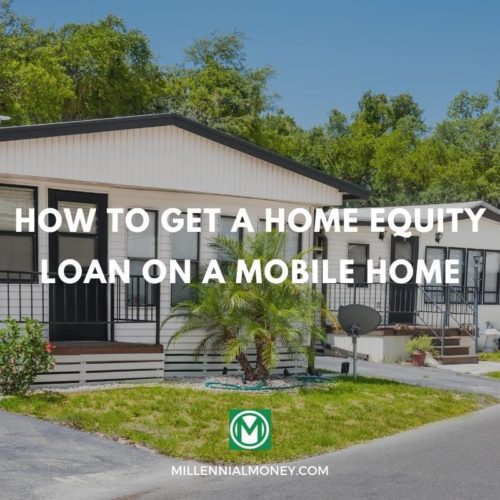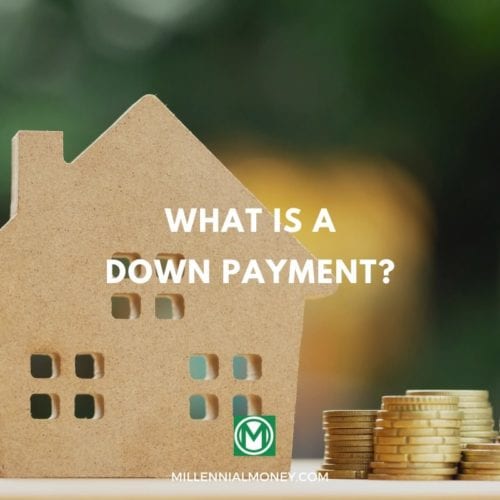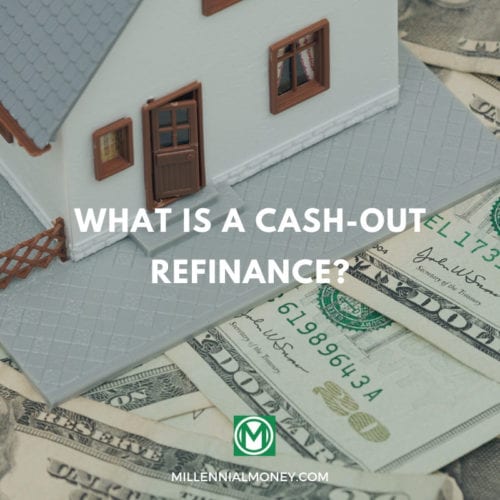Most people assume you should refinance your home anytime interest rates fall so you can lower your monthly payment. That’s certainly true in many situations, but there are a lot more reasons why you might want to consider refinancing.
In this article, we’re going to provide you with a helpful, easy-to-use refinance calculator and focus on answering the question, should I refinance my mortgage?
Let’s explore the reasons for refinancing, and the benefits it will provide.
Should I Refinance My Mortgage?
Lowering your interest rate and monthly payment is one reason, but there are actually at least seven situations where you should consider refinancing your mortgage.
1. Lower Your Interest Rate and Monthly Payment
This is undoubtedly the most common reason to refinance your mortgage. But it’s one that ultimately involves numbers. Generally speaking, if you’re going to save a significant amount of money on your monthly payment – as well as lower your interest rate – it’s well worth doing. Given the size of a typical mortgage, as well as the many years required to make payments on it, any reduction in either your monthly payment or your interest rate has great potential to improve your overall financial situation.
We’re going to get into the math of refinancing your mortgage later in this article. But for now, I want to focus on the less appreciated reasons to refinance that don’t involve lowering your monthly payment (though that may happen anyway).
2. To Reduce Your Mortgage Term
Reducing your term is probably the second most common reason to do a refinance. Most typically, homeowners will refinance from a 30-year mortgage into a 15-year loan. The obvious benefit is that you cut your loan term in half, and save tens of thousands of dollars in payments and interest once the loan is paid in full.
There is a trade-off to reducing your loan-term, and that’s often the much higher monthly payment. For example, let’s say you currently have a $250,000 mortgage on a 30-year term with a rate of 4% and a monthly payment of $1,193.
You can refinance the loan into a 15-year mortgage with an interest rate of 3.5% – but the monthly payment will rise to $1,787.
Your monthly payment will increase by $594, or just a hair short of $600. And it’ll stay that way for the next 15 years. But if your income and budget can accommodate a higher payment, the payoff will be huge.
The obvious advantage is that you will cut your loan term in half, dramatically move up the date when you will own your home free-and-clear, and save tens of thousands of dollars in interest.
If you experience a steep increase in income in the years after purchasing the home, you may want to consider refinancing. If you own the home for five years, and your income is now 30% or 40% higher than it was when you bought it, refinancing into shorter term is a natural progression.
3. Remove Private Mortgage Insurance
If you made a down payment of less than 20% when you purchased your home, you’re almost certainly paying private mortgage insurance (PMI) in your monthly payment. And while federal regulations do provide for the removal of PMI under certain particular circumstances, you may be ready to do it now.
That’s very likely to be the case if you live in an area where property values have been rising substantially in the past few years.
Maybe at the time you bought your house, you were only able to come up with a 5% down payment. But perhaps the value of the property has risen enough in the last few years that your 95% loan has fallen to 70%.
If so, you can refinance into a new mortgage, and get rid of the PMI payment. And if interest rates have fallen since you bought your house, you’ll get the dual benefit of the lower basic monthly house payment and the elimination of PMI.
If you currently have PMI on your mortgage, but your home value has increased significantly, consider refinancing to ditch the PMI.
4. Consolidate a Second Mortgage or Line of Credit
This is more likely to apply to people who have lived in their current homes for many years. The increase in property values over the long-term creates a tempting opportunity to take equity out of your home. That usually takes the form of either a second mortgage for a home equity line of credit (HELOC).
The problem with both types of financing is the interest rate. Second mortgages usually carry a higher rate than first mortgages, and a higher proportional monthly payment, due to a shorter term.
HELOCs often have low interest rates and very low monthly payments. But both are mostly an illusion. The low interest rates are due to the variable rate structure (based on short-term rates). And the low monthly payment usually comes from an interest-only term.
The problem is that they eventually come to an end. Because the interest rate is variable, it will increase when the prime rate rises. And when your interest-only term ends, you’ll suddenly need to begin making principal payments – usually over a reduced term, like 10 years.
Whether it’s a second mortgage or HELOC, the best way to get rid of it is to do a refinance.
Refinancing a first and second may not necessarily get you a lower payment. But it will get you a stable payment and interest rate, and reduce your housing expense to a single monthly payment rather than two.
This is another common reason for refinancing. But make sure you don’t add more secondary financing after you’ve refinanced to get rid of the first one.
5. Change from a Risky Loan to a Fixed Rate
Despite record low and near record-low interest rates over the past decade, some homeowners have still chosen variable rate loans and balloon mortgages. They managed to save a small amount of money due to slightly lower interest rates. But in the process, they’ve taken on a lot of risk.
In the case of an ARM loan, your interest rate can rise with an increase in general interest rates. Most ARM loans have a lifetime cap of 5% to keep them from going into the stratosphere. But even if you’re initial rate was 3%, the potential to pay 8% is very real.
Balloon loans come with a stable rate. But the balloon feature means the loan will come due at the end of the term. That’s usually somewhere between five and 10 years out.
Balloon loans today usually allow you to recast the mortgage at whatever the prevailing interest rates are at the time the loan comes due. But with interest rates currently at record lows, the best strategy is to refinance out of your balloon mortgage now. Otherwise, you’re taking a chance that rates will behave well when the balloon on your balloon loan is about to pop.
6. When Your Financial Situation has Improved
Huh??? Yeah, I’ll bet you never thought of this one. But let’s face it, many first-time homebuyers are not in the best of financial shape at the time of the purchase. You may have accepted a high interest rate due to less than perfect credit, a small down payment (or maybe none at all), or even a high debt-to-income (DTI) ratio.
If your financial situation has improved significantly since you purchased your home, it’s time to get serious about refinancing your mortgage. Armed with a higher credit score, a bigger paycheck, and more home equity, you should be able to get something close to the very best mortgage rates available.
Sometimes it’s not the direction of interest rates that determines when you should refinance. Just as often, it’s an improvement in your personal financial profile. And once that happens, at least investigating refinancing always makes good sense.
7. Remove a Cosigner from Your Mortgage
There’s some scuttlebutt on the web that you can remove a cosigner from a mortgage through a cosigner release. Don’t bet on it! A mortgage is a securitized loan and legally recorded. Releasing a cosigner isn’t as simple as it is with other loan types, and that’s if a mortgage lender would even consider doing it.
The cleanest way to remove a cosigner is to refinance into a new loan in your own name.
As a rule, having a cosigner should never be a permanent arrangement – which it well can be with a mortgage. The loan will remain in the cosigner’s name and on their credit report until it’s paid. If a person is willing to help you get a home by cosigning the loan, you should be diligent about getting them removed as soon as possible. A a refinance is the easiest and most final way to do that.
Bonus Advice: You can’t have a cosigner released from a mortgage by having them execute a quitclaim deed on the property. That only removes them from the title to the home. It has absolutely nothing to do with the mortgage, and certainly won’t enable them to be released.
Mortgage Refinance Calculator
Mortgage refinance rates are currently at historical lows. If you obtained your mortgage several years ago, have improved your credit score, or just want to reduce your monthly payment, you can possibly save a ton on interest by refinancing. Even the difference of 1% can save you tens of thousands over the life of your mortgage.
Use our calculator below to get an idea of just how much you could save by refinancing your mortgage.
Step 1: Current Mortgage Information
%
Step 2: Refinance Information
%
Step 3: See Your Results
Monthly Payment
Current: $599.55
New: $438.47
Remaining Interest
Current: $115,838.42
New: $53,848.55
Remaining Total
Current: $215,838.42
New: $157,848.55
Remaining Years
Current: 30
New: 30
Is It Worth It To Refinance a Mortgage?
This question applies primarily to doing a refinance to lower your interest rate and monthly payment. You can answer this question with a simple math equation. In the mortgage industry, the decision to refinance comes down to the time it takes to recover your closing costs.
Closing costs are a part of the mortgage process, whether you’re buying a new home or refinancing your current one. Industry experts recommend that you compare the savings you’ll get from refinancing with the amount of closing costs you’ll pay to get that benefit.
As a general rule, the monthly savings on your refinance should enable you to recover your closing costs within 24 to 36 months.
The best way to demonstrate how this works is through a couple of examples.
A Scenario Where Refinancing May Not Work:
You currently have a mortgage of $200,000. The interest rate is 4.50%, and you have an opportunity to refinance the loan at 3.5%. However, the refinance will require you to pay $5,000 in closing costs. That’s well within the typical 2% to 3% range for closing costs.
Your current monthly payment is $1,013. By refinancing into a 3.5% loan, the payment will fall to $898. That will save you $115 per month.
You can determine the number of months it will take you to recover your closing costs by dividing the amount of the closing costs ($5,000) by the $115 per month savings in your payment.
$5,000 ÷ $115 = 43.5 months
The closing cost recovery period will exceed the upper range of the recovery period (36 months), so it may not be a recommended strategy. However, if this is your “forever home”, you may decide to go ahead with the refinance anyway. After all, saving $115 per month over something approaching 30 years is a lot of money.
At the same time, you need to be aware that the coveted forever home doesn’t always turn out to be. Sometimes a job change, career change, or need to relocate for a change in family status gets in the way of the long-term plan. That’s the whole reason for the closing cost recovery period convention.
A Scenario Where Refinancing Definitely Works:
On the other hand, let’s take all the same numbers, except that your current mortgage rate is 5.5%. At that rate, your current mortgage payment is $1,135. By refinancing at 3.5%, and dropping your payment down to $898, you’ll save $237 per month.
Let’s see how that plays out using the same $5,000 in closing costs:
$5,000 ÷ $237 = 21 months
Refinancing based on those numbers is a no-brainer. You’ll recover your closing costs in 21 months, which is below even the minimum recovery period of 24 months.
And once you’ve recovered your closing costs, it’ll be pure savings for the rest of your mortgage term.
Can I Refinance My Mortgage with No Closing Costs?
Yes, you can avoid closing costs, but be careful how a mortgage representative answers this question. If that person is a bit over-eager to get your business – especially if your objective is to get the lowest possible rate – he or she may answer that question by telling you that you can “roll your closing costs over to the new loan.”
Technically speaking, that’s a correct answer. After all, it addresses any concern that you may need to pay money out-of-pocket for the refinance. Including the closing costs in the new loan will take care of that situation neatly, while preserving the sweet, low interest rate you’re hoping to get.
But that’s not the same as refinancing your mortgage with no closing costs. You may not be paying them out-of-pocket, but you will be paying them nonetheless – over the full term of the new mortgage and with interest added on to make those closing costs even higher.
But if you want a true no closing cost refinance, there’s a better way.
Lender Paid Closing Costs
To a person not familiar with the process, this can sound like a classic oxymoron. After all, how – and why – would a lender pay closing costs owed to itself?
It has everything to do with the relationship between interest rates and discount points.
You may be familiar with the concept of paying discount points to lower your interest rate. But the opposite is also true. You can increase your interest rate in exchange for having the lender pay points back to you.
The typical conversion is 1 point – or 1% of your new loan amount – can be purchased by increasing your interest rate by 1/8 of a percent, or 0.125%.
If your closing costs are 2% of your new mortgage, you can have the lender cover those costs by increasing your interest rate by 0.25%.
In this case, if the base rate is 3.50% with 2% in closing costs, you can make the closing costs go away by increasing your interest rate to 3.75%.
Now technically speaking, you’re still paying for the closing costs through the slight increase in the interest rate on your new loan. But it avoids at least two problems:
- The need to pay closing costs out-of-pocket, or
- To add them to the new loan amount, thus increasing your loan balance and monthly payment.
Lender Paid Closing Costs Make Sense Most of the Time
There’s an even more significant benefit to lender paid closing costs. In the examples in the previous section, I worked scenarios based on the closing cost recovery period. But if you’re using lender paid closing costs, there are no closing costs to recover.
In that situation, it would make sense to do a refinance any time you can get a lower interest rate while having the closing costs paid by the lender.
For example, you may determine based on the closing cost recovery period that refinancing your 4.5% mortgage to a 3.5% mortgage isn’t desirable because it will take you more than three and half years to recover the closing costs.
But if you’re able to do lender paid closing costs and refinance at 3.75%, refinancing would make perfect sense. It would even make sense if you were lowering your interest rate from 4.0% to 3.75%!
You’ll get the benefit of the lower interest rate and monthly payment, but you wouldn’t have to pay closing costs out-of-pocket, or increase your existing loan balance.
If you’re even considering refinancing, lender paid closing costs should be a major part of the discussion with your mortgage lender.
Is Refinancing My Mortgage A Good Idea?
There are two main points I hope I’ve made clear this article:
- There are many more reasons to refinance your mortgage than just getting a lower interest rate and monthly payment, and
- There’s a way to refinance your mortgage at no cost to you, even if the reduction in the interest rate is very small.
Think about the various reasons you might want to refinance your mortgage and maybe focus a little bit less on interest rates. As long as rates are at least a little bit lower than what you’re paying right now, refinancing your mortgage could make sense under a multitude of circumstances.





No comments yet. Add your own